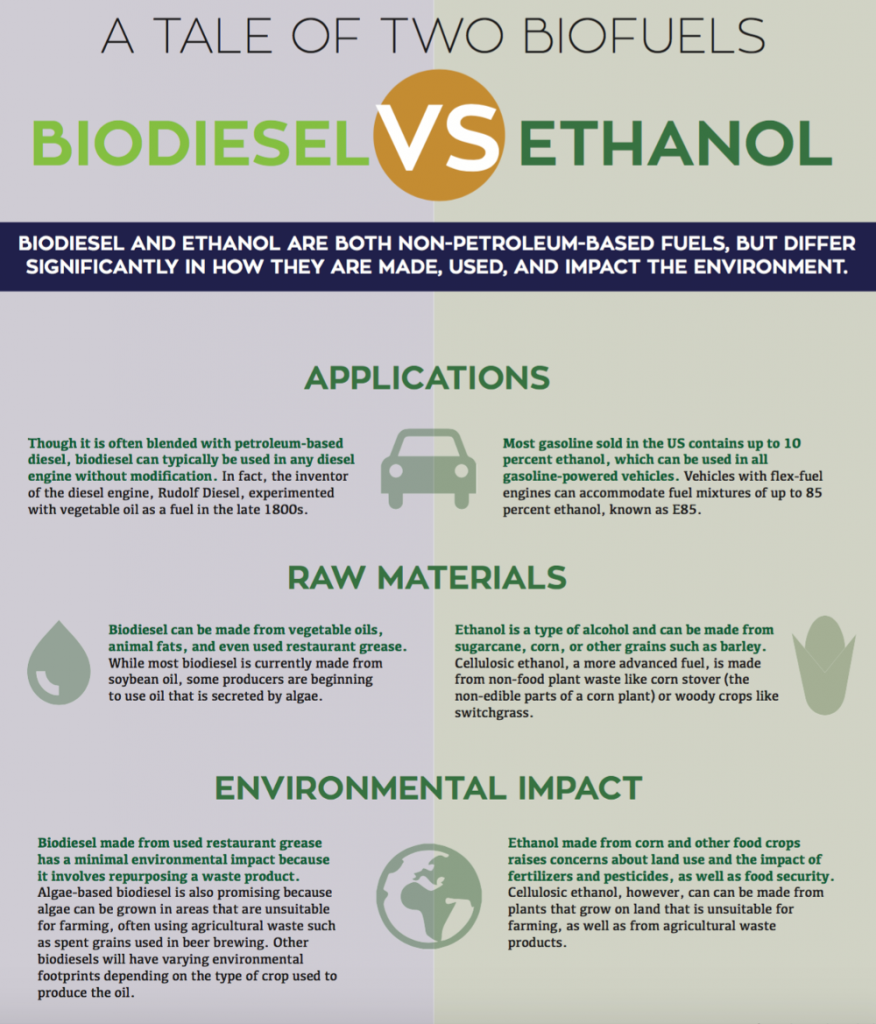
Biodiesel and Ethanol are both Non-Petroleum-Based fuels, but differ significantly in how they are made, used, and impact the environment.
Biodiesel
APPLICATIONS
Though it is often blended with petroleum-based diesel, biodiesel can typically be used in any diesel engine without modification. In fact, the inventor of the diesel engine, Rudolf Diesel, experimented with vegetable oil as a fuel in the late 1800s.
RAW MATERIALS
Biodiesel can be made from vegetable oils, animal fats, and even used restaurant grease. While most biodiesel is currently made from soybean oil, some producers are beginning to use oil that is secreted by algae.
ENVIRONMENTAL IMPACT
Biodiesel made from used restaurant grease has a minimal environmental impact because it involves repurposing a waste product. Algae-based biodiesel is also promising because algae can be grown in areas that are unsuitable for farming, often using agricultural waste such as spent grains used in beer brewing. Other biodiesels will have varying environmental footprints depending on the type of crop used to produce the oil.
Ethanol
APPLICATIONS
Most gasoline sold in the US contains up to 10 percent ethanol, which can be used in all gasoline-powered vehicles. Vehicles with flex-fuel engines can accommodate fuel mixtures of up to 85 percent ethanol, known as E85.
RAW MATERIALS
Ethanol is a type of alcohol and can be made from sugarcane, corn, or other grains such as barley. Cellulosic ethanol, a more advanced fuel, is made from non-food plant waste like corn stover (the non-edible parts of a corn plant) or woody crops like switchgrass.
ENVIRONMENTAL IMPACT
Ethanol made from corn and other food crops raises concerns about land use and the impact of fertilizers and pesticides, as well as food security. Cellulosic ethanol, however, can can be made from plants that grow on land that is unsuitable for farming, as well as from agricultural waste products.
Source: US Energy Information Administration







